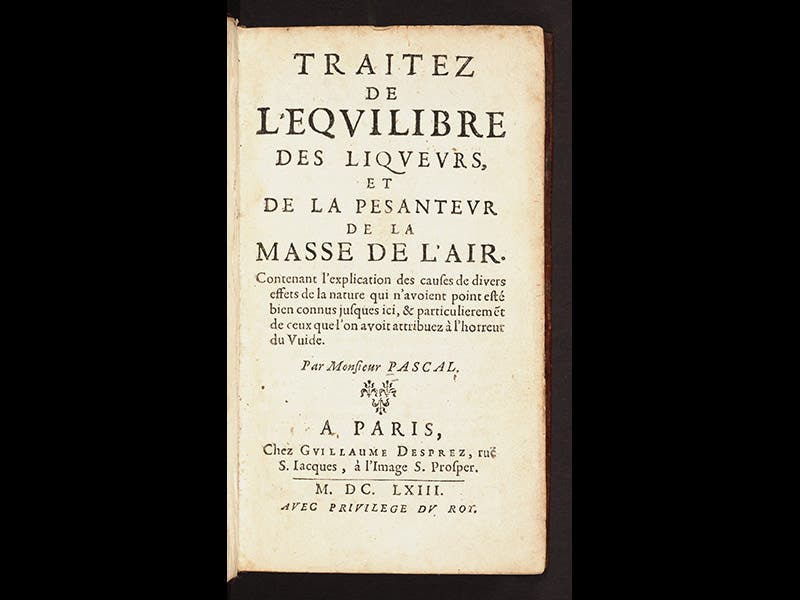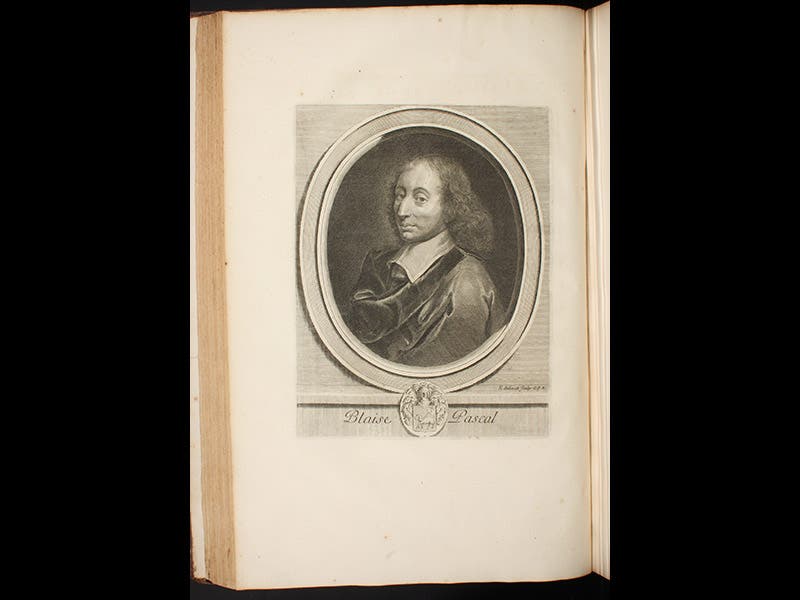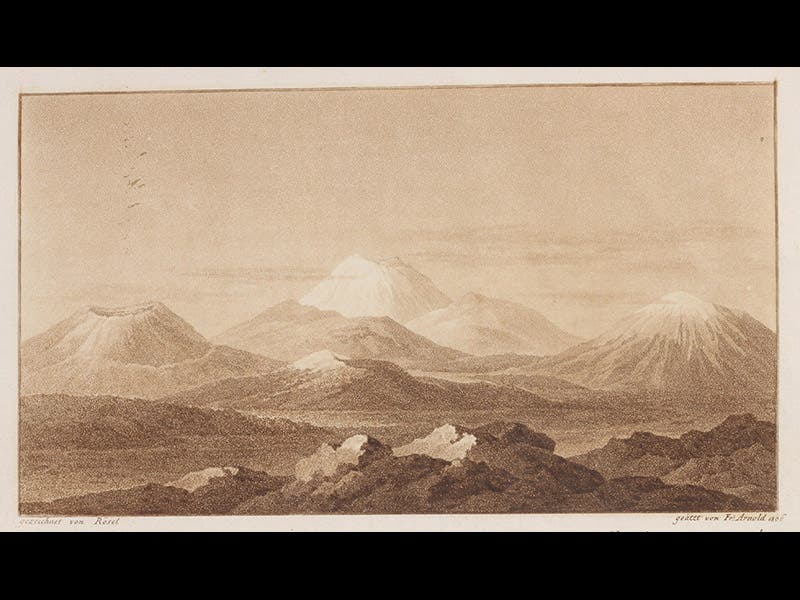Scientist of the Day - Blaise Pascal


Blaise Pascal, a French mathematician and physicist, was born June 19, 1623. In 1646, Pascal learned that an Italian, Evangelista Torricelli, had inverted a long glass tube filled with mercury into a bowl also filled with mercury, and the result was 30" of mercury left standing in the tube and who knows what above it, in the top of the closed tube. Torricelli thought that there was a vacuum at the top of the tube, and he thought that the mercury in the tube was kept up by the weight of the atmosphere pressing down on the bowl. Both claims were highly contested--at this time, air was believed to be naturally light, and Nature was supposed to abhor a vacuum.
Pascal sided with Torricelli, and he reasoned that if the atmosphere had weight, then less atmosphere should have less weight, and the level of the mercury in the barometer (as we now call Torricelli's tube) should be lower. Accordingly, on Sept. 19, 1648, Pascal engaged his brother-in-law Perier to climb the Puy de Dôme (the tallest mountain in central France, third image), carrying a Torricellian tube with its bowl of mercury all the way up. Sure enough, as Perier climbed higher, the level of the mercury fell. This experiment, which convincingly demonstrated that air has weight, is one of the most famous experiments performed during the period of the Scientific Revolution.
Pascal wrote up a treatise describing his experiments on the vacuum, but after a religious crisis in 1651, he refused to have anything more to do with experimental science, and it wasn’t until after his death that Perier saw the manuscript through the press. We have a copy of the Traitez de l’equilibre des liqueurs, et de la pesanteur de la masse de l’air (Treatises on the Equilibrium of Liquids and the Weight of the Mass of the Air, 1663) in our History of Science Collection (fourth image); the one plate (fifth image) shows some of Pascal’s experimental apparatus, but does not show the Puy de Dôme experiment. For that, we have to turn to the always useful Les merveilles de la science (1867) by Louis Figuier, where we find a delightful wood engraving of Perier, his Torricellian tube, and the Puy de Dôme (first image).
The portrait of Pascal (second image) is from a portrait folio in our collection, Charles Perrault, Les hommes illustres qui on paru en France pendant ce siècle (1696-1700). The aquatint of the mountains of Auvergne and the Puy de Dôme (third image) is from Leopold von Buch, Geognostische Beobachtungen auf Reisen durch Deutschland und Italien (1802-09), also in our collection.
Dr. William B. Ashworth, Jr., Consultant for the History of Science, Linda Hall Library and Associate Professor, Department of History, University of Missouri-Kansas City. Comments or corrections are welcome; please direct to ashworthw@umkc.edu.









